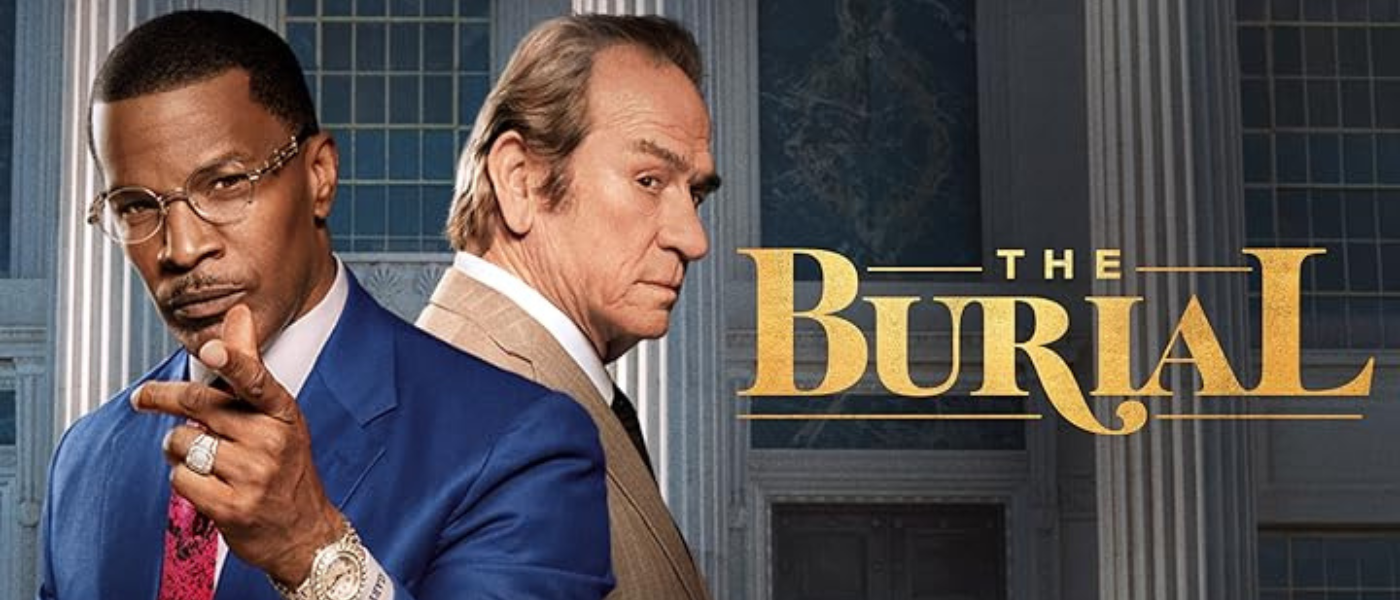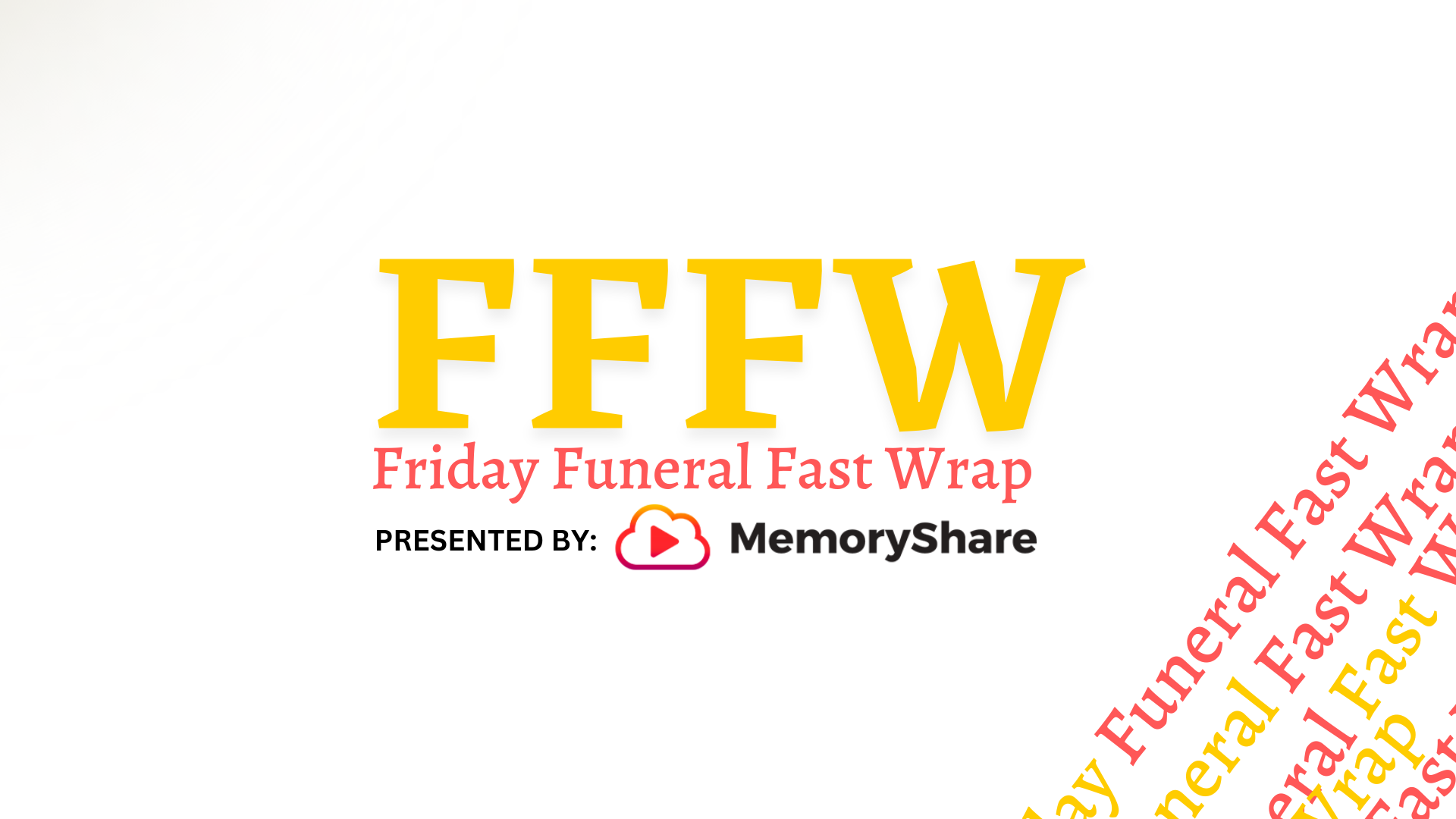Deathcare Weighs In On The Burial Movie and Fact vs. Fiction
When we first heard stirrings that a movie based on a historic funeral home “scandal” was in the works, ears across the deathcare-verse certainly perked up … and we had questions. Would The Burial be accurate? How would it frame the profession? Would it even be any good?
That last question was resolved when we learned that the stars of The Burial were Tommy Lee Jones and Jamie Foxx, both well-respected actors with stellar resumes. Indeed, the movie opened on September 11, 2023 to solid reviews and an impressive 91% Rotten Tomatoes score. But as for the other questions … Did a movie that promised to delve into the “complexities and deceptions within the funeral industry” actually do so, and if so, did it stick close to the true story?
The real deal
Most big screen recreations of real-life drama are introduced as being “loosely-based” on true stories; viewers expect a fair dose of creative license to make the film enjoyable. However, too much fiction can mix up the narrative, assign false characteristics to key players, and even derail the message or outcomes. The Burial, however, seemed to add just enough color and embellishment to enhance the story and its subjects without straying too far from the actual happenings.
In case you’re not familiar with the situation that inspired the movie, here’s a quick synopsis. In the mid-1990s, Jeremiah “Jerry” O’Keefe, III had just successfully expanded (via acquisition) the Mississippi Gulf Coast funeral home founded by his great-grandfather in 1865. According to Southern Calls magazine, which in 2015 featured a lovely story on Bradford-O’Keefe Funeral Home’s 150th anniversary celebration, Jerry O’Keefe was a decorated World War II Marine Fighter Pilot, the father of 13 children, and served as a “state legislator, mayor and leader of organizations too numerous to mention.”
O’Keefe and his wife Annette also owned Gulf National Life Insurance Company; Gulf National policies were sold by several funeral homes, including Wright & Ferguson in Jackson, Mississippi. In 1990, Canada-based The Loewen Group joined with family-owned Riemann Funeral Homes in purchasing Wright & Ferguson. In addition to offering to purchase two of O’Keefe’s funeral homes, the new owners agreed to honor a 1974 contract with O’Keefe promising to sell Gulf National products exclusively — an agreement which, in a 1991 lawsuit, O’Keefe claimed Loewen breached. Loewen settled the suit, but according to O’Keefe, continued to divert funeral insurance business to a Gulf National competitor. They also never followed through on their promise to purchase any of O’Keefe’s locations. It was this breach of the settlement that led to the 1995 court case depicted in the movie The Burial.
True to life?
Jerry O’Keefe, portrayed in the movie by Tommy Lee Jones, hired Black Florida litigator Willie Gary to represent him in his second suit against the powerful Loewen Group and its associates. While O’Keefe died in 2016, Gary is alive and well, and Jamie Foxx, who played Gary in The Burial, took the opportunity to learn some of Gary’s story from the man himself. However, even though Foxx preferred to “create his own Willie Gary,” many of Gary’s characteristics were accurately reflected in the movie, including Gary’s “showy wardrobe.”
Jones researched his role as O’Keefe by watching videos and meeting with O’Keefe’s family members — two of whom, O’Keefe’s son Jeffrey O’Keefe, Sr. and grandson Jeffrey Hugh O’Keefe, Jr. now serve, respectively, as CEO and President of Bradford-O’Keefe Funeral Home. At an early October special screening of the movie in Biloxi, Jeffrey O’Keefe, Sr. commented that his father, who sold the rights to his story in 1996, “wasn’t all that jazzed up about the Hollywood thing.” The local newspaper covering the event also shared that Jones didn’t share Jerry O’Keefe’s “distinguishing shock of white hair” which made him easily recognizable by locals.
Perhaps the most creative liberties, though, were taken in the depiction of Loewen Group founder and CEO Ray Loewen, who is played by actor Bill Camp. Loewen took over his family’s Steinbach, Manitoba funeral home in the 1960s, and eventually grew the business, mainly through acquisition, into Canada’s largest deathcare provider. At the time of the O’Keefe lawsuit, the Loewen empire was the second largest provider in North America, trailing only Service Corporation International (SCI). Articles published by news outlets in Vancouver and in Burnaby, British Columbia, where Loewen headquartered his business and built an $11 million mansion, both portrayed the real-life businessman as ambitious and, well, greedy.
Connecting Directors readers also believe the portrayal of Loewen in The Burial was fairly accurate, including the scene where Loewen and O’Keefe break bread (and lobster) on the former’s lavish yacht.
“The yacht and meal was exactly what Ray would do to entertain a prospective seller,” Scott Miller commented on the Connecting Directors’ Facebook page. However, Miller continues, “Ray never had a beard, and still doesn’t. The glasses were bang on, though.”
Fudging facts
Ronnie Lineberger, a commenter who also mentioned the beard discrepancy, shared another glaring omission in The Burial: The involvement of co-defendants from Wright & Ferguson Funeral Home and the other Mississippi-based entities.
“My father-in-law was a regional partner with Loewen at that time, and knew the Mississippi regional partner who was never mentioned in the movie, who, as my father-in-law said, created the whole mess,” Lineberger writes.
“The Mississippi partners’ role was vital to the lawsuit,” echoed commenter Kippy Lang. “Adding this extra layer would have confused the viewer.”
In its article, “The Burial True Story: 10 Biggest Changes From Willie E. Gary’s 1995 Lawsuit,” Screen Rant agrees that in the movie, the actual contract dispute is “simplified for clarity,” with Loewen verbally promising not to sell burial insurance in the area and O’Keefe agreeing to sell three of his funeral homes to Loewen in return. “This straightforward exchange is designed to make the narrative more accessible for the audience. In reality, the case involved a third party, further complicating matters.”
Another Facebook commenter believes the simplified focus on the contract dispute was detrimental to the actual story. “There was not enough explanation of what Loewen actually did that was bad. It was glossed over,” writes Ellery Bowker.
Other fictionalized or creatively massaged aspects of the movie as identified by Screen Rant include racial tension as a central theme of the trial (it was not), O’Keefe being Gary’s first white client (he wasn’t), Gary’s all-Black team of attorneys (he was assisted by both Black and white lawyers), and Loewen’s team of all-Black female attorneys (they were all male and not led by a Black attorney).
Capitalizing on capitalism
Sadly, as Screen Rant states, The Burial accurately captures “Loewen’s unapologetic capitalist mentality.” The “ostentatious” yacht was real, and was mentioned several times during the actual trial to “showcase” Loewen’s “tone-deaf view of luxury,” although not in the same line of questioning as in the movie.
Facebook commenter Lineberger also worked for a six-funeral home, four-cemetery group that became Loewen’s first acquisition in North Carolina. He met Ray Loewen personally, but hints that his first impressions of Loewen weren’t exactly spectacular. “He said no changes would happen as our company was a well-run business; that lasted about 30 minutes.”
Other Facebook commenters echoed the sentiment that the promises made and momentum shown when Loewen Group first acquired a property didn’t always last.
“I worked in a Loewen Group-acquired mortuary,” writes Patti Hurley Blaser. “It was so wonderful in the beginning … spent money on us like crazy … then things started going downhill fast.”
“The Loewen Group had some great people and they were a great employer in the beginning,” writes Miller. “When the money ran out, so did the good times.”
Even deathcare providers in Ray Loewen’s former home of Steinbach have recently commented on his group’s dubious business practices. Steinbach funeral director Elbert Toews told a local outlet that he and a group of like-minded deathcare professionals founded a funeral home in the 1990s in direct response to the “monopolization and price gouging in the funeral industry by companies like the Loewen Group.”
“While they expanded their business, they went to the various funeral homes and cemetery sites and bought up these places,” Toews told SteinbachOnline, adding that the group often left the previous owners in place but directed how they operated. “That caused the prices to go sky high,” he said.
The deathcare impact
Toews’ comments touch on an important aspect of The Burial movie that was overshadowed by its messages about racial tensions and the theme of David defeating Goliath: What about the families who were harmed by the practices of The Loewen Group? Will the ever-so-brief victims’ stories that were shared in the trial scenes have a negative impact on today’s deathcare professionals? We asked that question of Connecting Directors’ Facebook followers.
“O’Keefe had a contract dispute for $6 million dollars that turned into a half-billion dollar verdict. Contrast that with movies like Erin Brockovich, which did a better job of explaining the tragedy of corporate wrongdoing by focusing on the victims and how they were harmed,” comments Ellery Bowker.
“Enjoyed watching it, but once again, preneed was put in a bad light,” says Christie Toson, while Meredith Norton writes, “The family owned funeral homes work so hard for the families in their community. The big guys come in and are greedy. They try all their lousy tactics and try to ruin the little guy by breaking them down and then swooping in to pay pennies on the dollar.”
Loewen’s treatment of its preneed clients is highlighted in the film’s portrayal of a deal between the Loewen Group and the Black National Baptist Convention (NBC). According to Screen Rant, the narrative of Loewen acquiring NBC’s graveyards and enlisting “Black church workers as sales agents to sell burial contracts in financially disadvantaged areas” is “rooted in reality.”
The montage of victims’ testimonies are fictional, yet based in truth, according to The Burial director Maggie Betts, who told Time, “Those testimonies were meant to [imply], it was bigger than this case. It was really about corporate exploitation, of not only poor minority groups, but poor people in general. So I took the theme of the trial and gave it these mouthpieces,”
The realities of the NBC deal warrant a movie in their own right: In 1999, NBC president Rev. Henry Lyons was found guilty of embezzling millions of dollars (including $3 million from Loewen Group itself) through the NBC/Loewen preneed sales partnership. Lyons was sentenced to three to seven years in prison and was released in November 2003.
The bottom line
All in all, the movie The Burial shouldn’t concern today’s deathcare professionals; if anything, it’s a film most can be proud to recommend to their non-deathcare acquaintances. Jones’ portrayal of Jerry O’Keefe as the hardworking, upstanding, fourth-generation director fighting to save his family-owned funeral home positions him as the hero of the story, which inadvertently bodes well for deathcare as a whole.
In the film, O’Keefe’s defeat of the giant Loewen Group seems to represent a victory over massive, mercenary corporations in general rather than deathcare-specific conglomerates. While the movie “Reiterated [that] local ownership should be vital in communities and the pitfall of how big corporate can lose touch but be humbled quickly,” as Chris Pollan commented on Connecting Directors’ Facebook page, the same sentiment could be shared for any industry facing a period of consolidation.
Ray Loewen is portrayed as the driving force behind the company’s predatory and discriminatory methods, and although the movie mentions graveyards and caskets in connection with his actions, the message seems more of a commentary on all greedy CEOs rather than on deathcare leadership.
Today, The Loewen Group is no more. Despite a $500 million verdict in favor of O’Keefe, the parties eventually reached a $175 million settlement that contributed to the company’s financial downfall. Loewen Group filed for bankruptcy protection in 1999, restructured as Alderwoods Group in 2002, and was sold to SCI in 2006. Ray Loewen was forced to resign in 1998 and sold his near-worthless Loewen Group stock the same year. As The Burial end cards reported, he reportedly moved to Hawaii and has stayed out of the spotlight since then.




